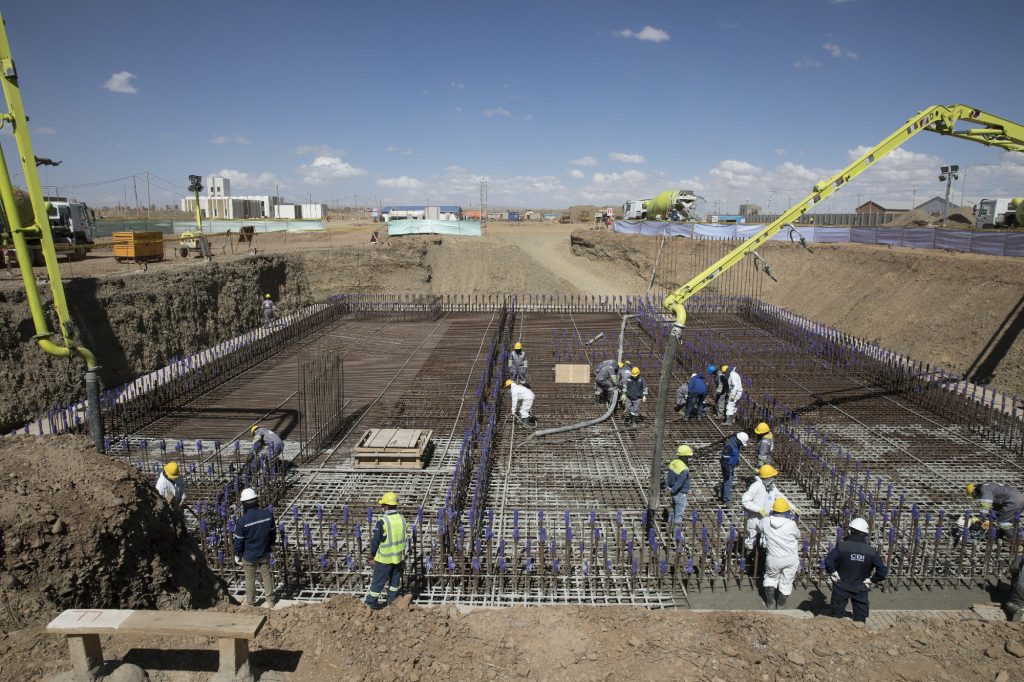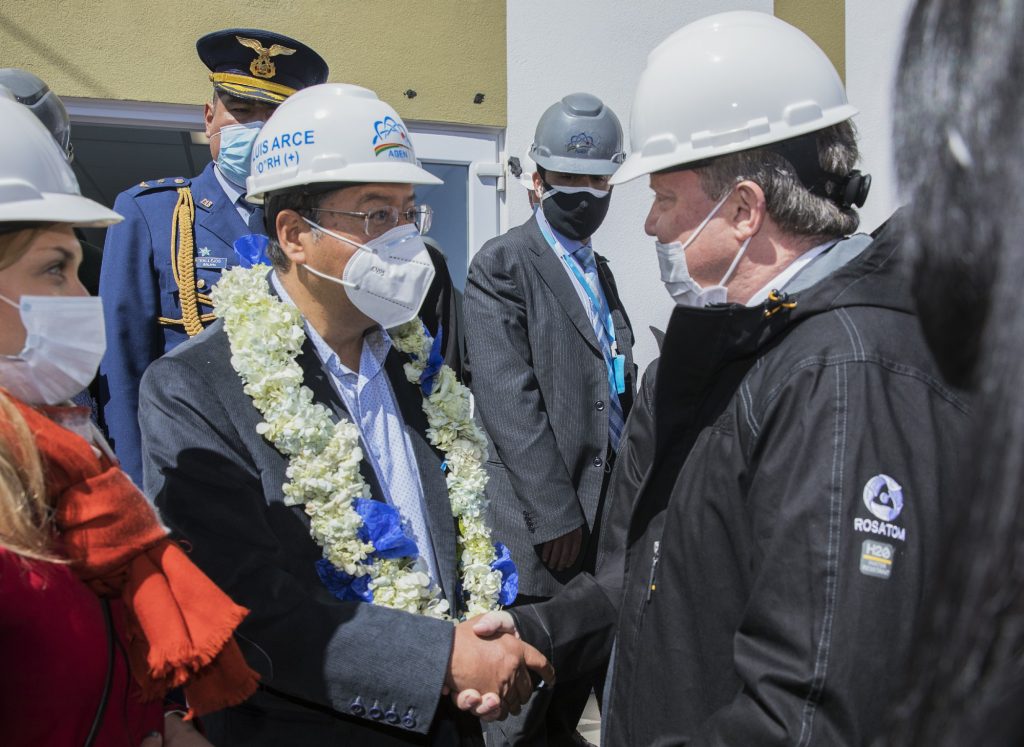
Russian Atom Reaches New Heights
back to contentsRosatom is building the Center for Nuclear Technology Research and Development (CNTRD) in Bolivia. This is the first turnkey project of this kind for the Russian nuclear corporation. In late July, first concrete was poured for the foundation of a research reactor. The benefits CNTRD will bring to the country are self-evident: it will protect the harvest from pests and help to diagnose and treat cancer timely and accurately and thus save people’s lives.
Until recently, there have been no nuclear facilities in Bolivia. Rosatom is deploying nuclear technology in the country, having started with a non-energy project.
In March 2016, Russia and Bolivia signed a framework agreement on cooperation in peaceful uses of nuclear power, including engineering and construction of research reactors and particle accelerators.
In September 2017, on the sidelines of the IAEA General Conference, the State Specialized Design Institute (GSPI, part of Rosatom) and the Bolivian Nuclear Energy Agency (ABEN) signed a general contract for the construction of CNTRD in El Alto. The construction site is located at the height of 4,000 meters above the sea level. The new center will be the highest altitude nuclear facility in the world. “This is a very interesting project in all respects,” said Rosatom’s Deputy Director General for Development and International Business Kirill Komarov.
The construction project is divided into four stages. The first two stages cover a pre-clinical cyclotron facility and a multi-purpose irradiation center.
The cyclotron is a particle accelerator for the fabrication of isotopes. They will be supplied to Bolivian medical centers for diagnostics and treatment of cancer. It is assumed that the radiopharmaceuticals fabricated at the Bolivian cyclotron facility will be sufficient for diagnostic procedures on 5,000 patients a year.
The irradiation center will use a high-performance gamma unit. Cobalt‑60 inside it emits gamma rays, which are used to sterilize medical equipment and eliminate harmful bacteria and other pathogens in agricultural produce. The irradiated products will be marked with RADURA, an international symbol showing that the products are safe. The irradiation center will also have a laboratory-grade gamma unit for research purposes. The cyclotron facility and the multi-purpose irradiation center are expected to be commissioned in a few months.
The third stage of the project will concentrate on a radiobiology and radioecology laboratory. It will be used to conduct research and develop new techniques for the irradiation of produce and agricultural goods. The research will be focused on the extension of their shelf life, improvement of seed properties, study of ionizing radiation impacts on pathogens, and other aspects of radioecology.
During the fourth stage of the project, a nuclear reactor and auxiliary technical facilities will be built. It will be a pool-type pressurized water research reactor with a thermal capacity of 200 kW. It was the basemat of this reactor, for which first concrete was poured in the presence of Bolivia’s President Luis Alberto Arce Catacora. A ritual of burning a stuffed llama was performed before the first concrete ceremony. According to local beliefs, the ritual will bring the project luck.
The research reactor will be coupled with neutron activation analysis, radioisotope and chemical laboratories. The reactor unit will be used to conduct tests and experiments, fabricate isotopes and provide advanced training courses for nuclear industry employees and students. The third and fourth stages of the CNTRD project will be commissioned in 2024.
Rosatom has launched an extensive educational program to train staff for the nuclear research center. “Bolivian students, who will work at the CNTRD, study in Russia majoring in nuclear science. Some of the students are about to receive their degrees — they have returned to the country and are busy preparing the cyclotron and multi-purpose irradiation center for commissioning,” ABEN Director General Hortensia Jiménez Rivera said in an interview for the Strana Rosatom newspaper. In 2015–2020, 119 offers in Russian technical universities were reserved for the students from Bolivia. The contract provides for the creation of about 500 highly qualified jobs. Rosatom also organizes webinars for Bolivian and, generally, all Spanish-speaking students. They were held in February and March 2021.
Like in any other country where Rosatom is present, it supports initiatives improving the life of local communities. In September 2020, the Bolivian office of GSPI provided humanitarian aid (mostly food and personal protective equipment) to local residents amidst the coronavirus pandemic.
In April 2021, Rosatom and ABEN organized an event for the children of El Alto — they watched a circus performance, played games, received presents and, of course, sweet treats. Quiz winners were given the Nuclear ABC, a book that gives simple answers to the most common questions about nuclear technology.




